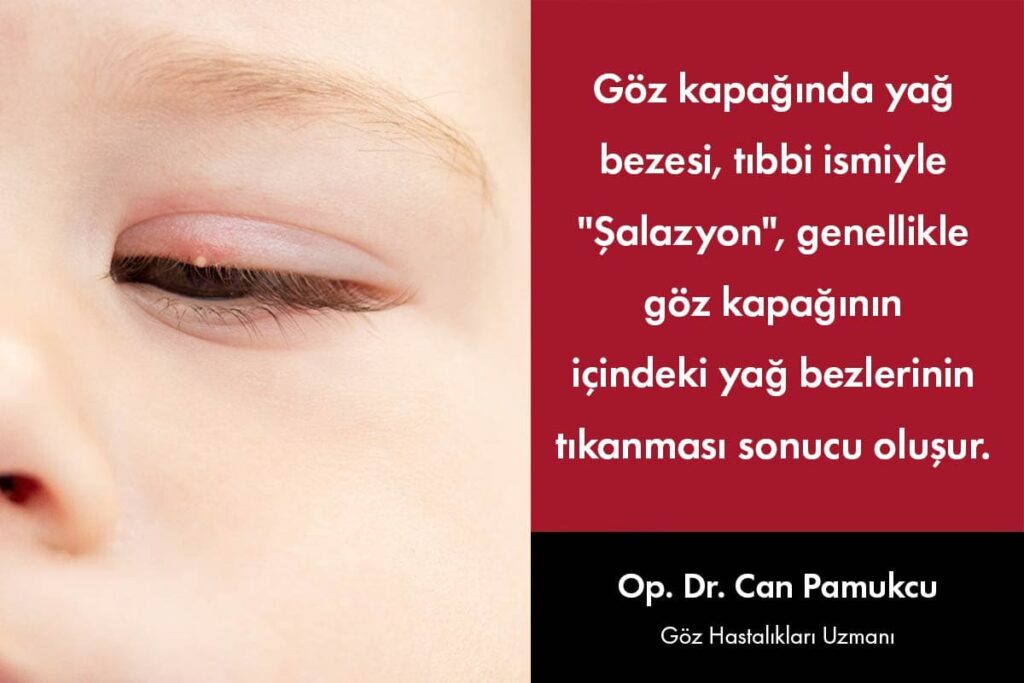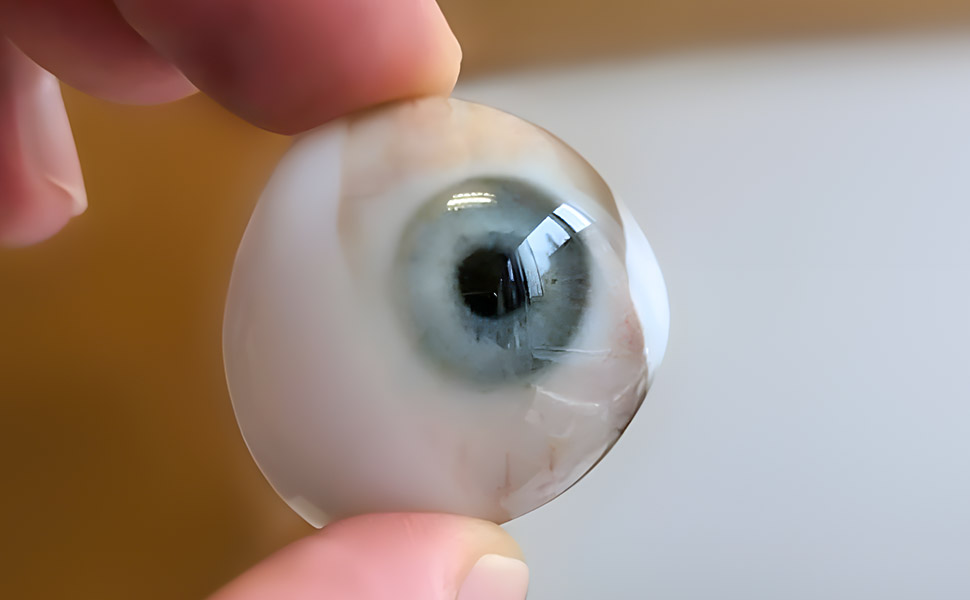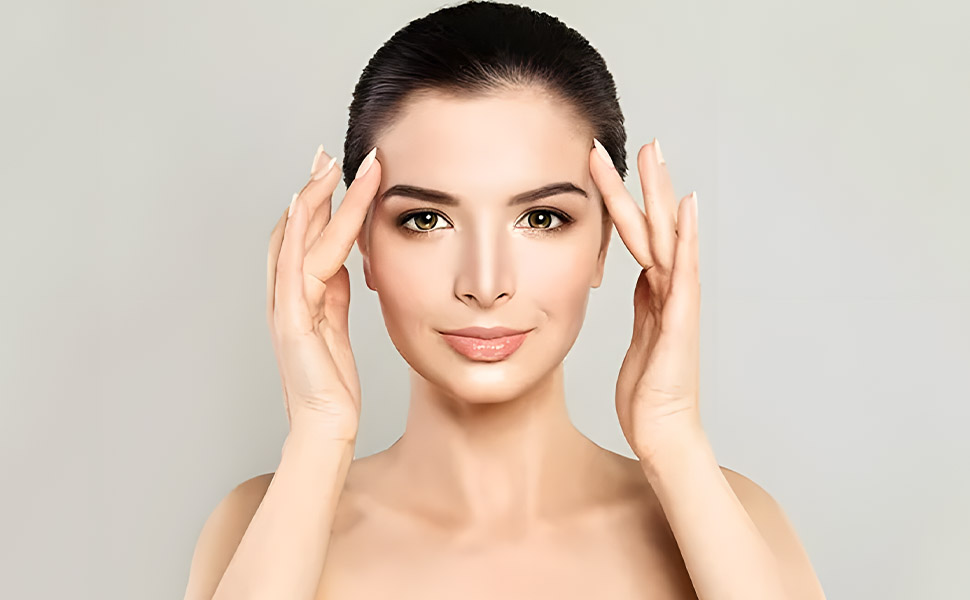
The oil gland that forms on the eyelid can affect the comfort of individuals beyond aesthetic concerns. the oil gland in the eyelid We will examine the causes, symptoms and treatment methods in depth.
Oil gland on the eyelidA cyst, medically known as a "cyst" or "lipoma," is defined as a soft, mobile mass formed by fat cells accumulating under the skin. It is generally harmless and is often treated for aesthetic reasons.
Why does an oil gland form on the eyelid? Here are the most common reasons:
Clogged Sebaceous Gland: Cyst formation may occur as a result of blockage of the oil glands in our skin.
Trauma: Cysts may develop as a result of blows to the eyelid.
Genetic Factors: Family history may increase the risk of developing sebaceous glands.
Oil gland on the eyelid The most obvious feature is a hard or soft mass felt under the skin. Other symptoms may include:
- Swelling of the eyelid
- Mild pain or discomfort
- Redness

Oil gland on the eyelid, with its medical name "Chalazion", usually occurs as a result of blockage of the oil glands within the eyelid. This results in an accumulation of oil within the gland, forming a hard cyst. Let's take a look at how to remove an oil gland from the eyelid:
Fomentation: Applying a warm compress to the eyelid can help relieve congestion. Soak a clean cloth or cotton pad in warm water, wring out any excess water, and apply gentle pressure to your eyelid for 10-15 minutes. You can repeat this process several times a day.
Massage: After applying a warm compress, you can gently massage the oil gland with clean hands. This can encourage the oil to come out.
If home treatments don't work or the oil gland continues to enlarge, it's important to see an ophthalmologist. Your doctor may recommend one of the following treatments:
Steroid Injection: Steroid injections may be given to reduce swelling and redness of the oil gland.
Surgical intervention: If the sebaceous gland is large or does not respond to treatment, it can be surgically removed under local anesthesia.
Antibiotic Treatment: If the oil gland is infected, your doctor may recommend antibiotic treatment.
You can take the following precautions to prevent the recurrence of the oil gland:
- Clean your eyes regularly.
- Always remove your makeup completely and clean or replace your makeup items regularly.
- Make it a habit to apply warm compresses to your eyelids.
Finally, oil gland on the eyelid If you notice any abnormalities, it's important to consult a specialist. Following your doctor's recommendations for treatment will help you achieve more effective and safe results.
Sebaceous gland It is usually harmless, but removal may be necessary for aesthetic or comfort reasons. Here are the treatment methods:
Surgical Method: Surgical removal of the cyst under local anesthesia is the most common treatment.
Drug Therapy: In some cases, an injection of medication may be given to drain the contents of the cyst.
Laser Treatment: For small cysts, laser therapy may also be an option.
Oil glands on the eyelid (chalazion), may vary from individual to individual. In some people it occurs only once, while in others it may recur. Here eyelid oil glands Information about the causes of recurrence and how to prevent it:
Sebaceous Gland Blockage: A chalazion on the eyelid occurs when the meibomian glands become blocked. If these glands become blocked again, the oil glands can reoccur.
Personal Predisposition: Some individuals may be more prone to developing oil glands due to genetics or skin structure.
Eye Hygiene: Irregular eye hygiene, makeup residue, or the use of old makeup products can cause the glands to become blocked and the oil glands to reoccur.
Chronic Eye Inflammation: In some individuals, chronic inflammation of the eyelid (e.g., blepharitis) may increase the risk of sebaceous gland formation.

Regular Eye Cleaning: Regularly cleaning your eyes and eyelids can prevent oily patches from forming again.
Makeup Hygiene: Remove your makeup completely every night. Clean your makeup brushes and sponges regularly. Make sure your eye makeup is fresh.
Hot Compress Application: Regularly applying a warm compress to your eyelid can keep the Meibomian glands active and prevent blockages.
Doctor Follow-up: If your eyelid oil glands recur frequently, it may be helpful to consult an ophthalmologist, who can help prevent recurrences with special cleansers or medications.
In conclusion, eyelid oil glands It can recur for reasons that vary from person to person. However, this risk can be reduced with the precautions mentioned above. In case of recurrence or when in doubt, it is always best to consult an ophthalmologist.
A lump on the eyelid is usually harmless and is treated for aesthetic reasons. If you notice any lumps on your eyelid, it's recommended that you consult a dermatologist.







